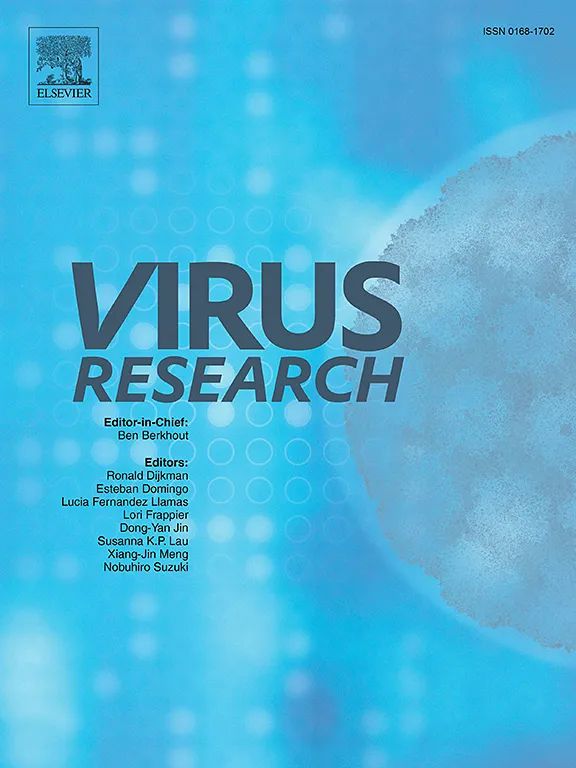Tecovirimat对多种MPXV有活性,而西多福韦、Brincidofovir、Trifluridine和吉西他滨没有检测到MPXV特异性抗病毒活性。
IF 2.7
4区 医学
Q3 VIROLOGY
引用次数: 0
摘要
在治疗mpox患者方面,目前的治疗选择是有限的,tecovirimat (TEC)是为数不多的可用治疗方案之一。TEC已被欧洲药品管理局(EMA)批准用于治疗m痘患者,并在欧洲和日本临床使用。然而,在暴露于TEC之后,抗TEC变体,如含有A290V的变体(MPXVRTEC/A290V)迅速出现。在这些涉及MPXVRTEC/A290V的病例中,已经使用了brincidofovir (BCV)等替代药物,尽管它们的疗效仍存在争议,而且它们的抗mpxv活性尚未明确定义。在目前的工作中,我们评估了五种药物的抗mpxv特性(TEC;cidofovir CDV;BCV;trifluridine TFT;据报道,吉西他滨和dFdC)对多种MPXV菌株有活性,包括MPXVSPL2A7, MPXVZr-599, MPXVLiberia和MPXVRTEC/A290V,采用基于细胞的定量分析,使用多种靶细胞类型(如VeroE6细胞)以及聚焦于其细胞静态和细胞毒性的形态计量学分析。TEC对MPXVSPL2A7、MPXVZr-599和MPXVLiberia的EC50值分别为0.001、0.005和0.002µM,无明显的细胞毒性,而对MPXVRTEC/A290V的EC50值为0.13µM,高出约130倍。CDV、BCV、TFT和dFdC对MPXVRTEC/A290V的EC50值分别为18、1.8、3.8和0.02µM;然而,这四种药物的抗mpxv活性与它们的细胞毒性高度相关,这是通过定性和定量的细胞形态测定法检测的。数据强烈表明,四种药物均未表现出显著的抗mpxv活性,表明迫切需要有效的抗mpxv药物,以对抗野生型和耐药变体。本文章由计算机程序翻译,如有差异,请以英文原文为准。
Tecovirimat is active against various MPXV strains, while cidofovir, brincidofovir, trifluridine, and gemcitabine have no detectable MPXV-specific antiviral activity
In treating patients with mpox, current treatment options are limited, with tecovirimat (TEC) being one of the few available. TEC has been approved by the European Medicines Agency (EMA) for treating patients with mpox and is in clinical use in Europe and Japan. However, following exposure to TEC, TEC-resistant variants such as A290V-containing variant (MPXVRTEC/A290V) emerge quickly. In such cases involving MPXVRTEC/A290V, alternative agents such as brincidofovir (BCV) have been used, although their efficacy remains controversial and their anti-MPXV activity is yet to be clearly defined. In the present work, we evaluated the anti-MPXV features of five agents (TEC; cidofovir, CDV; BCV; trifluridine, TFT; and gemcitabine, dFdC) reportedly active against various MPXV strains including MPXVSPL2A7, MPXVZr-599, MPXVLiberia and MPXVRTEC/A290V, employing cell-based quantitative assays using multiple target cell types such as VeroE6 cells as well as morphometric assays focusing on their cytostatic and cytotoxic natures. The EC50 values of TEC against MPXVSPL2A7, MPXVZr-599, and MPXVLiberia were 0.001, 0.005, and 0.004 µM, respectively, without tangible cytotoxicity, while that against MPXVRTEC/A290V was ∼130-fold greater with 0.13 µM. The EC50 values of CDV, BCV, TFT, and dFdC against MPXVRTEC/A290V were 18, 1.8, 3.8, and 0.02 µM, respectively; however, the apparent anti-MPXV activity of these four agents was highly associated with their cytotoxicity as they were examined with qualitative and quantitative cell-based-morphometric assays. The data strongly show that none the four agents examined exhibited significant anti-MPXV activity and indicate that effective anti-MPXV agents active against wild-type and drug-resistant variants are urgently needed.
求助全文
通过发布文献求助,成功后即可免费获取论文全文。
去求助
来源期刊

Virus research
医学-病毒学
CiteScore
9.50
自引率
2.00%
发文量
239
审稿时长
43 days
期刊介绍:
Virus Research provides a means of fast publication for original papers on fundamental research in virology. Contributions on new developments concerning virus structure, replication, pathogenesis and evolution are encouraged. These include reports describing virus morphology, the function and antigenic analysis of virus structural components, virus genome structure and expression, analysis on virus replication processes, virus evolution in connection with antiviral interventions, effects of viruses on their host cells, particularly on the immune system, and the pathogenesis of virus infections, including oncogene activation and transduction.
 求助内容:
求助内容: 应助结果提醒方式:
应助结果提醒方式:


